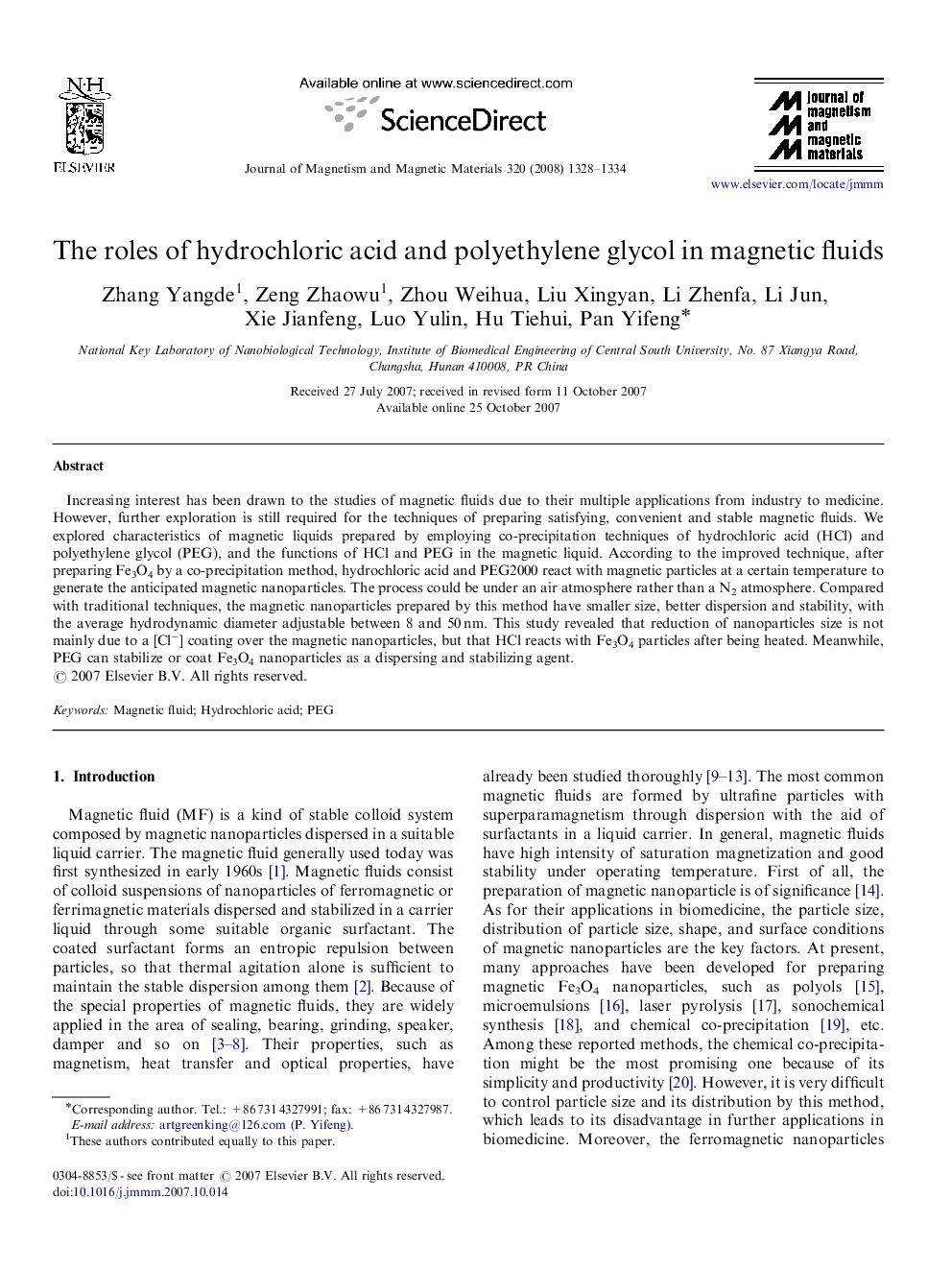| Article ID | Journal | Published Year | Pages | File Type |
|---|---|---|---|---|
| 1804104 | Journal of Magnetism and Magnetic Materials | 2008 | 7 Pages |
Increasing interest has been drawn to the studies of magnetic fluids due to their multiple applications from industry to medicine. However, further exploration is still required for the techniques of preparing satisfying, convenient and stable magnetic fluids. We explored characteristics of magnetic liquids prepared by employing co-precipitation techniques of hydrochloric acid (HCl) and polyethylene glycol (PEG), and the functions of HCl and PEG in the magnetic liquid. According to the improved technique, after preparing Fe3O4 by a co-precipitation method, hydrochloric acid and PEG2000 react with magnetic particles at a certain temperature to generate the anticipated magnetic nanoparticles. The process could be under an air atmosphere rather than a N2 atmosphere. Compared with traditional techniques, the magnetic nanoparticles prepared by this method have smaller size, better dispersion and stability, with the average hydrodynamic diameter adjustable between 8 and 50 nm. This study revealed that reduction of nanoparticles size is not mainly due to a [Cl−] coating over the magnetic nanoparticles, but that HCl reacts with Fe3O4 particles after being heated. Meanwhile, PEG can stabilize or coat Fe3O4 nanoparticles as a dispersing and stabilizing agent.
